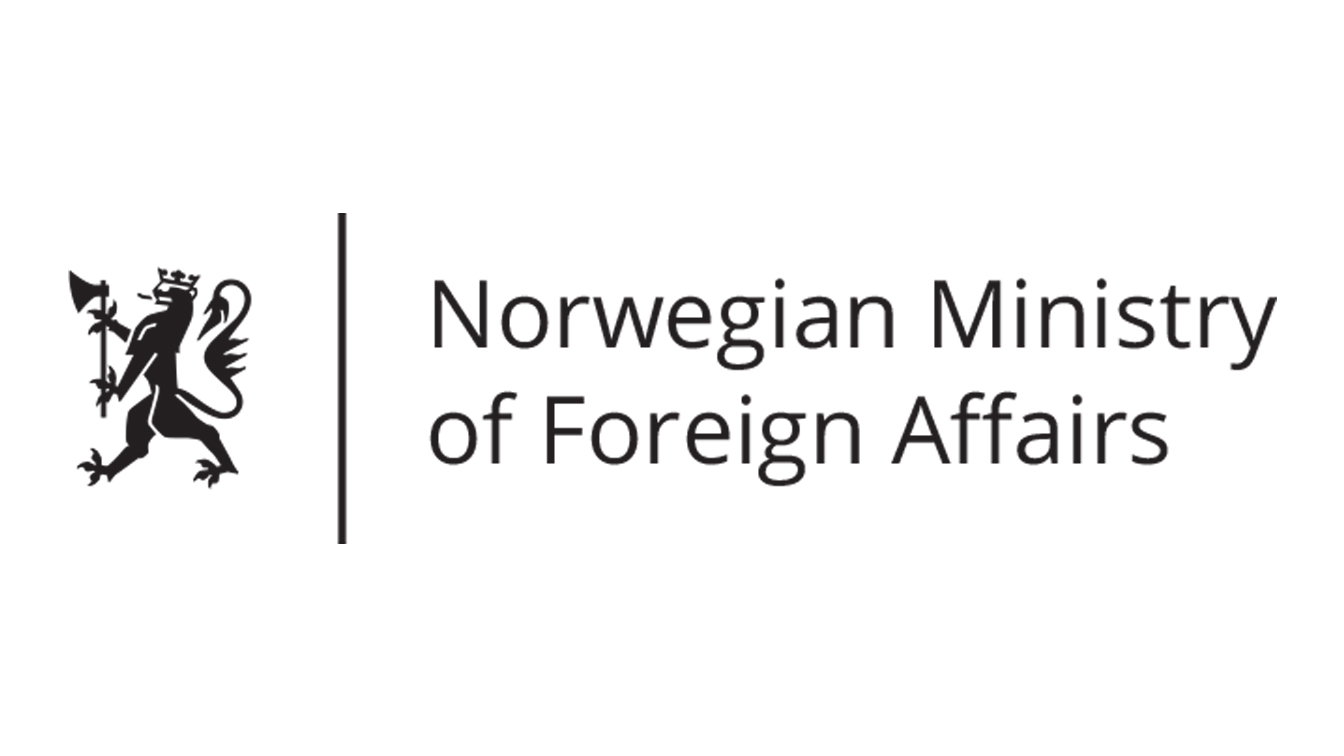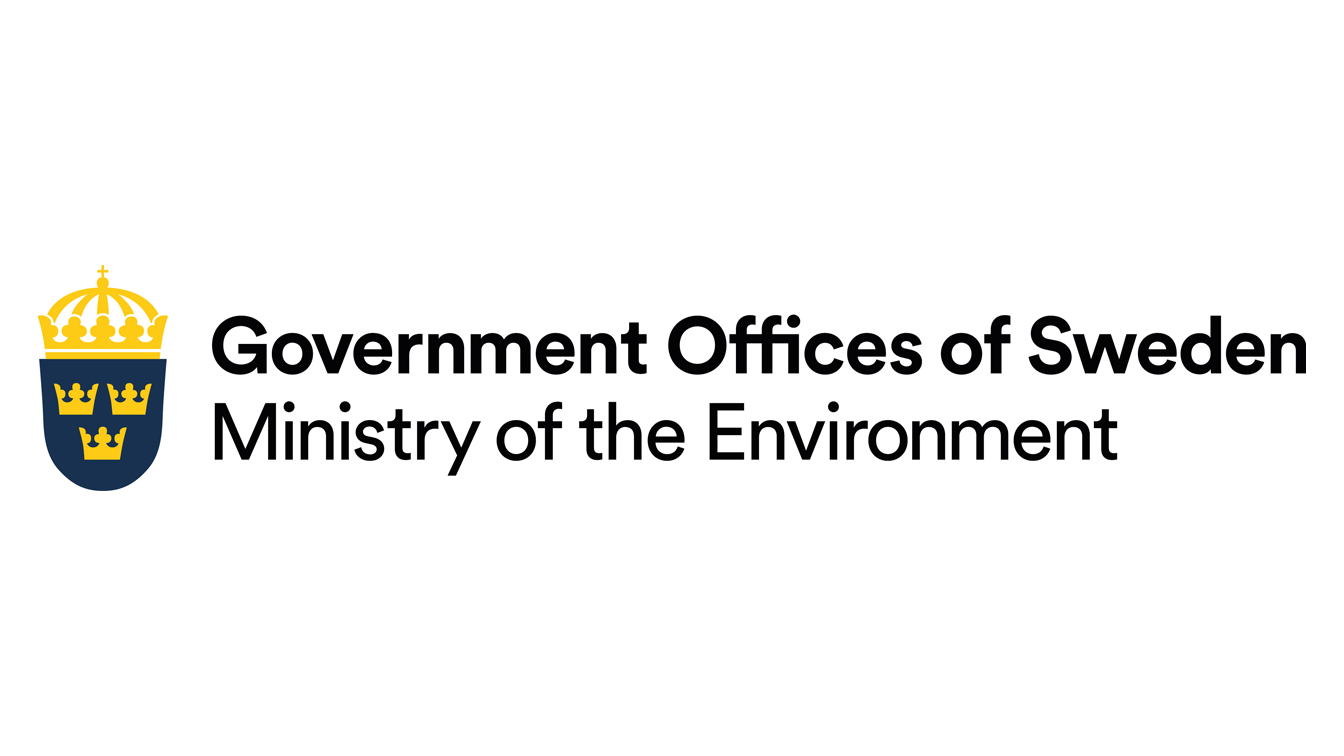Stockholm and the Birth of Environmental Diplomacy
Still Only One Earth: Lessons from 50 years of UN sustainable development policy
The 1972 United Nations Conference on the Human Environment in Stockholm began a new era of global cooperation on environmental issues. It paved the way for the concept of sustainable development and led to the birth of the United Nations Environment Programme. What lessons does it hold as we face mounting global crises? (Download PDF) (See all policy briefs) (Subscribe to ENB)
In 1972, Apollo 17 took the first colour photo of the Earth. It showed our world as a blue marble set against the black expanse. We collectively understood our one Earth is a closed, finite system and our only home. It was our responsibility to care for our blue marble [or One Earth] “as a whole and intricate mechanism supporting an incredible complex web of interacting and interconnected life” (Engfeldt, 2009, p.26).
Over the previous decade, a series of environmental disasters sparked awareness and concern about the natural environment. Seven hundred fifty people died in the “pea soup” fog attributed to air pollution in London in 1962. A coal mine waste pile collapsed in 1966, burying 116 children and 28 adults in Aberfan, Wales. In 1967, the Torrey Canyon oil tanker spilled millions of liters of oil in the English Channel. In 1969, a passing train inadvertently ignited floating pieces of oil-slicked debris on Ohio’s Cuyahoga River. An oil spill off Santa Barbara, California, killed an estimated 3,500 seabirds. Europe was shocked by a mass fish poisoning in the Rhine River. Drought ravaged the Sahel, causing starvation among some of the world’s poorest people. Japan mourned the 2,265 victims of mercury poisoning caused by a chemical company releasing the toxin into Minamata Bay. The site would lend its name to Minamata disease, the neurological disease caused by mercury poisoning.
Silent Spring, written by Rachel Carson, captured the public and scientific moment. Carson exposed the devastating effects of pesticides and other chemical substances on humans and the environment. Scientists were starting to study the negative environmental and societal effects of the industrialized world. Developing country scientists and leaders decried the ongoing exploitation of raw materials in their countries by their former colonizers.
Amid the Cold War and with many countries struggling to free themselves from colonialism, it was clear that a collective response was necessary. Some governments called for expanding United Nations activities into the environmental field. The UN’s foundational treaty, the United Nations Charter, sets out to improve living conditions for all people, and promote peace, stability, economic development, and human rights. But it was silent on environmental issues. In the end, it was “the initiative of a small country in Scandinavia that laid the foundation for international cooperation on environmental matters” (Grieger, 2012).
Environmental issues have never been free of discord and contention. These debates shaped the 1972 United Nations Conference on the Human Environment and, in turn, environmental management for the next 50 years. Key ideas, like sustainable development, and institutions, such as the United Nations Environment Programme (UNEP), exist today because of the discussions sparked by the conference. The Stockholm Conference demonstrated that, with leadership and listening to the concerns of all, cooperation on environmental and sustainable development issues is possible.

The Swedish Proposal
By the late 1960s, Sweden was a respected middle power, able to challenge the United States and the Soviet Union and their Cold War status quo. Swedish diplomats tried to shift the global agenda towards international development and environmental protection (Grieger, 2012). In 1967, Sweden proposed to convene a UN conference on the human environment, arguing that the time was ripe for a serious, substantive discussion at the global level about environmental problems. Sweden even suggested this could be a constructive issue for global cooperation amidst the tense atmosphere of the Cold War (Engfeldt, 2009, p.34).
“[Environmental issues] … have not yet been given the prominence in the deliberations of the competent organs of the United Nations…. Furthermore, as the problems of human environment grow more serious every day… [t]here is, therefore, an indisputable need to create a basis for comprehensive consideration within the United Nations of the problems of human environment.”
The response was surprising. Despite Cold War politics, the Soviet Union and other members of the Eastern bloc joined the United States and most Western European countries in supporting the Swedish initiative. But France and the United Kingdom claimed there was no great need for UN action on the environment. They worried such a conference could be used by developing countries to extract more financial support, particularly from former colonial powers. Many developing countries were uneasy that Northern interests would dominate the proposed conference and that “green issues” would be an excuse to restrict their development (Linnér and Selin, 2005, p.60).
By December 1968 Sweden had sufficient support. The United Nations General Assembly adopted resolution 2398(XXIII), which called for a conference on the relationships between environmental, social, and economic issues to be convened in 1972. In May 1969, the United Nations accepted Sweden’s offer to host the conference in Stockholm. The conference would not take decisions. Any recommendations arising from it would have to be formally adopted by the General Assembly.
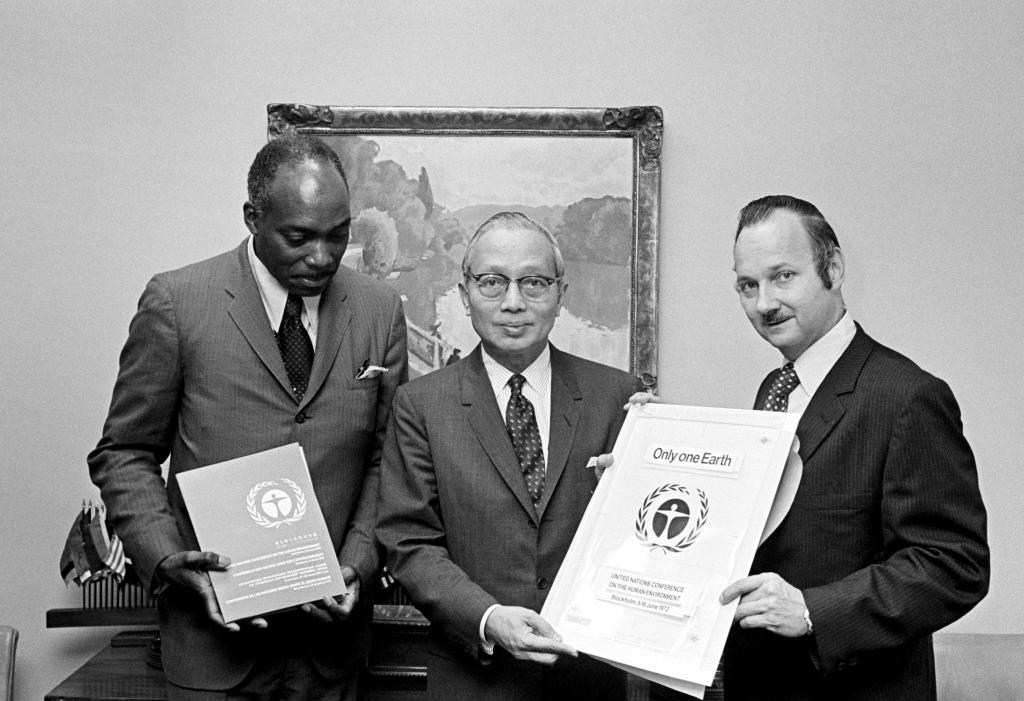
The United Nations Conference on the Human Environment
UN Secretary-General U Thant tasked Maurice Strong, a businessman and, at the time, the head of the Canadian International Development Agency (CIDA), to be Secretary-General of the Conference. Strong envisioned a three-part preparatory process that would build the information base on environmental issues, since this was a new area for the UN, and act based on that information:
- Intellectual and conceptual framework: Strong commissioned the first ever “state of the environment” report. It represented the knowledge and opinion of the world’s leading experts and thinkers about the relationship between humans and their natural habitat. The title of the report, “Only One Earth,” became the motto of the Stockholm Conference.
- Action plan for future work: Diplomats began early discussions on concrete recommendations for further action and institutional arrangements for taking such action. This type of action plan would become the model for many future UN global conferences.
- Issues for immediate action: These included specific issues that required immediate international action that could be completed, at least through an initial stage, by the time of the conference. Governments’ suggestions included the early establishment of a global environmental. monitoring system, an international registry of chemical compounds, and marine pollution measures (Engfeldt, 2009, pp.48-49).
The concerns of developing countries were real and pressing. The Founex panel (a group of twenty-seven experts that gathered in Founex, Switzerland in June 1971) discussed how developing countries could respond to environmental concerns without holding back their own development. Perhaps, the panel suggested, developing countries could turn environmental concerns to their advantage. The meeting resulted in “The Founex Report on Development and Environment,” which was the first report to identify key environment- development objectives and relationships, and contributed to locating and bridging the policy and conceptual differences that separated developed and developing countries. The Founex Report brought the ideas behind sustainable development into the conversation.
The preparations for the conference faced several obstacles. First, the Soviet bloc of countries boycotted the event because East Germany was excluded. Western countries insisted on using the “Vienna formula,” meaning only members of the UN or its specialized agencies could participate. This meant that East Germany could not attend the Stockholm Conference, but West Germany could. The Eastern bloc argued that since environmental issues transcended state borders, all countries should participate. A vote in the UN General Assembly in December 1971 upheld the Vienna formula. The Soviet Union and most members of the Eastern bloc avoided the conference, although many participated in the preparatory process (Linnér and Selin, 2005, p.61).
But that was not all. Conflicts between the industrialized countries of the North and the developing countries of the South posed an even greater challenge. A major boycott by developing countries seemed possible and would have ruined the conference. Many developing countries argued that the North largely caused environmental problems, although some admitted such problems also existed in their own countries.
“We do not wish to impoverish the environment any further and yet we cannot for a moment forget the grim poverty of large numbers of people. Are not poverty and need the greatest polluters?”
Indian Prime Minister Indira Gandhi emerged as a figurehead to represent developing countries’ fears and priorities. With other influential developing countries such as Brazil, Gandhi stressed the problems of war, poverty, and development. The new-found environmental concerns of the North, they said, must not be used as an excuse to restrict the development of the South and exert control over their resources and destinies. To reflect global priorities, developing countries argued that the focus should instead be on issues relating to underdevelopment and poverty (Linnér and Selin, 2005, p.60).
In the end, the United Nations Conference on the Human Environment was well attended, with 113 of the UN’s 132 Member States present. Two heads of state or government participated in the conference: Gandhi and Olof Palme of Sweden. In addition, 250 non-governmental organizations came to the conference—an unprecedented achievement at the time.
The Stockholm Conference produced three major sets of decisions. The first was the Stockholm Declaration. The second was the Stockholm Action Plan comprising 109 recommendations for governments and international organizations on international measures against environmental degradation. The third was a group of five resolutions. The resolutions called for: a ban on nuclear weapon tests that may lead to radioactive fallout, an international databank on environmental data, the need to address actions linked to development and environment, international organizational changes, and the creation of an environmental fund.
The Stockholm Declaration provided the first agreed global set of principles for future work in the field of the human environment. It was a considerable contribution to the development of international environmental law. Its legacy continues: the concepts formed the basis of the 1992 Rio Declaration
(Engfeldt, 2009, p.65) and other declarations, resolutions, and treaties. Some of the more ground-breaking principles included:
- Principles 1 and 2 on intergenerational obligations.
- Principles 3, 5 and 6 on sustainable development concepts.
- Principle 11, which states the environmental policies of states should enhance and not adversely affect the present or future development potential of developing countries.
- Principle 12 introduces the concept of “additionality” in development assistance, whereby donors earmark additional funds in their development assistance budgets for environmental protection measures.
- Principle 21 says states have the sovereign right to exploit their own resources pursuant to their own environmental policies and the responsibility to ensure that activities within their jurisdiction do not cause damage to the environment of other states or of areas beyond the limits of national jurisdiction.
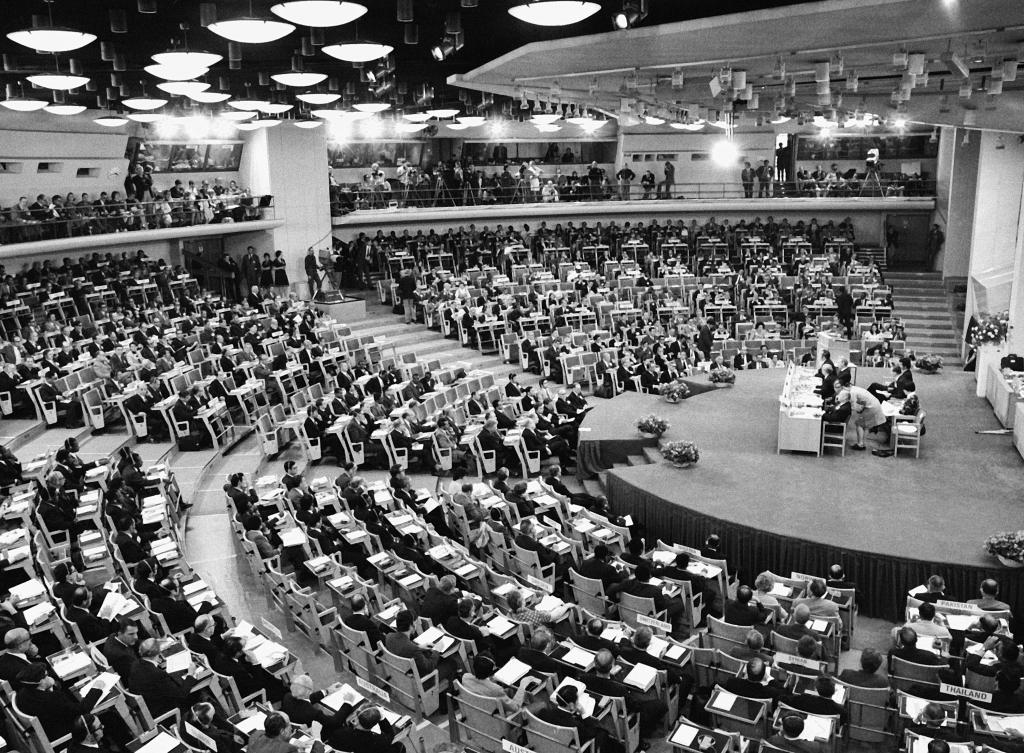
The Action Plan became a major stimulus to ongoing activities and to several new ones in the UN system, including a more systematic monitoring of the state of the environment. However, countries did not cost the proposals and formulated them in a general way that encouraged actions, while not directing anything specific. Another weakness was that the plan focused more on the symptoms rather than the causes of environmental problems (Engfeldt, 2009, p.67-68).
Governments recognized the need for immediate action on marine pollution. This concern resulted in the London Convention, which was adopted later in 1972, and the International Convention for the Prevention of Pollution from Ships (MARPOL) in 1973, which were the first-ever global treaties on marine pollution. Governments also called for a 10-year moratorium on whaling. Several other negotiations outside of the Stockholm Conference benefitted from its profile and recommendations. The World Heritage Convention and Convention on the International Trade in Endangered Species of Wild Fauna and Flora (CITES) were completed shortly after Stockholm. The Ramsar Convention on Wetlands— which was completed, but not yet signed by enough countries—got a boost from a recommendation for countries to sign (Engfeldt, 2009, p.65).
The Stockholm outcomes were presented to the General Assembly later in 1972 and the Assembly accepted the declaration and action plan in resolution 2995(XXVII).

The Birth of the United Nations Environment Programme
One important item under negotiation was the need to establish institutional arrangements within the UN to ensure conference follow-up. This would not only ensure the lasting national and international impact of the Stockholm process, but it would also set the framework for the UN’s continued engagement with environmental issues.
When the United Nations General Assembly took up institutional and financial arrangements for environmental cooperation later in 1972, it incorporated most of the conference’s recommendations in resolution 2997(XXVII). Member States agreed there would be an intergovernmental committee that would provide policy guidance, an environmental secretariat, and an environment fund. The voluntary environment fund would provide additional financing for the costs of new environmental initiatives undertaken within the UN system.
The General Assembly agreed that the secretariat would serve as the UN focal point for environmental issues. It would be headed by an Executive Director, who would also chair an environmental coordination board across the UN system. Maurice Strong was the inaugural UNEP Executive Director for four years, following his nomination by the Secretary-General.
The location of the secretariat proved to be the most difficult issue. More than a dozen countries offered to host the new organization (Johnson, 2012, p.28). However, developing countries strongly believed that UNEP should be the first UN body to be located outside of the industrialized world. Both India and Kenya campaigned to host UNEP. Many industrialized countries, on the other hand, preferred Geneva, Switzerland, so that it would be near other UN specialized agencies. Once India withdrew its candidature in favor of Kenya, to show “goodwill and solidarity” to a fellow developing country, Kenya received the support of the Group of 77, the developing country coalition (Johnson 2012, 33). In the end, the industrialized countries chose to accept the outcome so as not to jeopardize follow-up to the Stockholm Conference, although many of them abstained from the vote. The resolution on the Nairobi location was adopted as resolution 3004(XXVII).
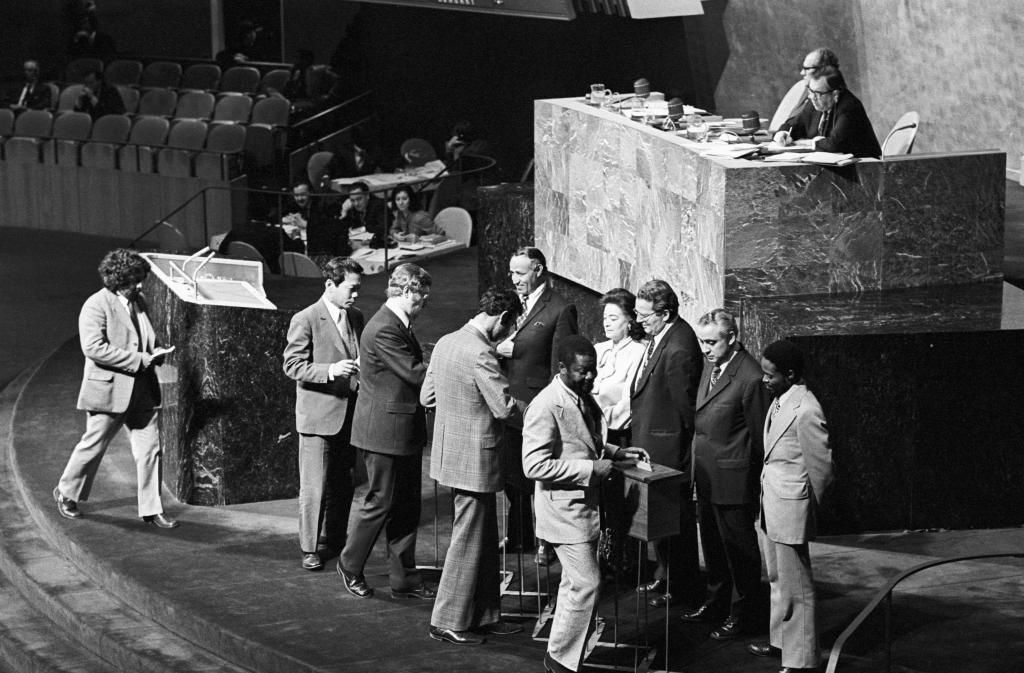
To this end, UNEP was established to serve as a center of leadership and initiative in international environmental matters. It can be thought of as a framework for cooperative action among existing international and national entities and as an administrator of the Environment Fund (Ivanova, 2007, p.347). Rather than serving as a sort of “environment police,” UNEP performs three core functions:
- Knowledge acquisition and assessment, including monitoring of environmental quality, evaluation of the collected data, and forecasting of trends, as well as scientific research and information exchange.
- Environmental quality management, including setting goals and standards through a consultative multilateral process, developing international agreements, and devising guidelines and policies.
- International supporting actions, including capacity building, technical assistance, education, training, and public information (Ivanova, 2007, p.346).
This new organization would soon take on some of the most pressing issues facing the world.
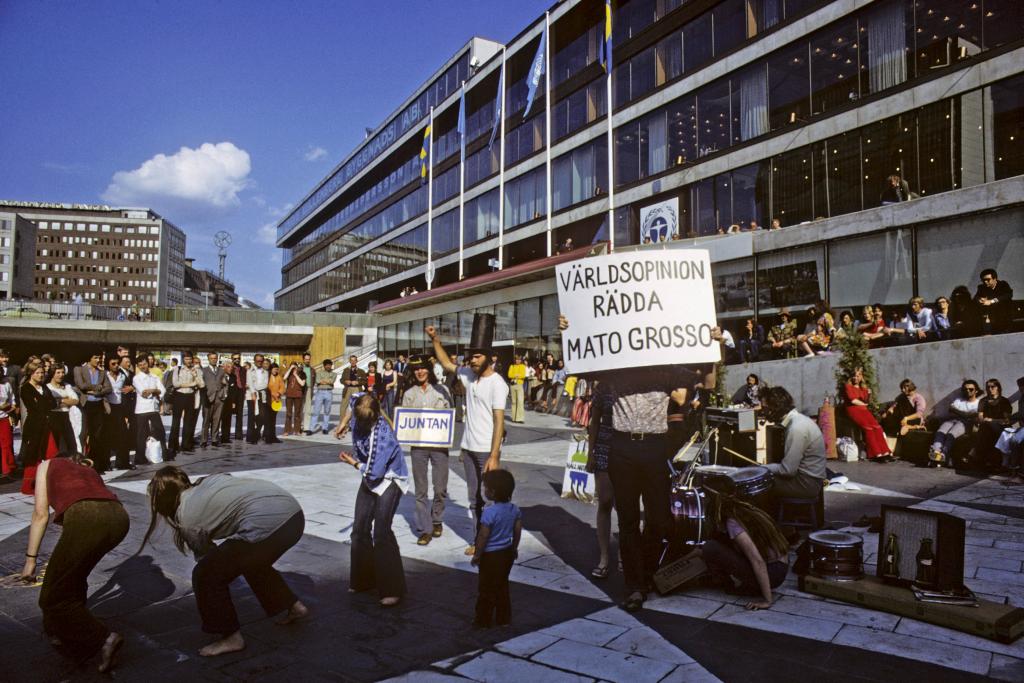
Stockholm’s Legacy
We owe much to the Stockholm Conference. The Stockholm Conference catalyzed a new era of multilateral environmental cooperation and treaty-making. Without it, UNEP would not exist, and many global environmental treaties would be unwritten. The Stockholm Declaration established international political goals and legal principles that have underpinned environmental discourse and law-making for a half century. By stressing that environmental issues are inherently political—not just scientific and technical, as many policymakers previously thought—and therefore need political negotiations and decision-making, the Stockholm Conference demonstrated how global cooperation could take place, even amid Cold War tensions (Engfeldt, 2009, pp.31-32).
We have learned much about our world because of the Stockholm Conference. Stockholm established the UN Earth Watch system for research and monitoring environmental issues and problems. Throughout the world, people and policymakers developed a new understanding of environmental issues, leading to the creation of national environmental ministries and environmental laws. The conference contributed to the democratization of environmental debate and policy-making by opening the door to non-governmental organizations that previously did not have access to in the UN system (Chasek and Sherman, 2004, p.18; Engfeldt, 2009, pp.86-87).
Finally, the Stockholm Conference identified a theme that has been at the centre of international environmental discourse: sustainable development. The debates held in 1972 foreshadowed discussions ever since: Who bears the blame for climate change? How can we lift people out of poverty while conserving ecosystems? Perhaps the real legacy of the 1972 Conference is the enduring search for solutions to reconcile economic development and environmental management and belief in global cooperation.
Works cited
Chasek, P. & R. Sherman. (2004). Ten days in Johannesburg: A negotiation of hope. UNDP South Africa/Government of the Republic of South Africa.
Engfeldt, L. (2009). From Stockholm to Johannesburg and beyond. Swedish Ministry for Foreign Affairs.
Grieger, A. (2012). “Only One Earth: Stockholm and the Beginning of Modern Environmental Diplomacy,” Environment & Society Portal, Arcadia, no. 10. Rachel Carson Center for Environment and Society. https://doi.org/10.5282/rcc/3867.
Ivanova, M. (2007). “Designing the United Nations Environment Programme: a story of compromise and confrontation.” International Environmental Agreements 7, 337–361. https://doi.org/10.1007/s10784-007-9052-4
Johnson, S. (2012). UNEP: The First 40 Years. UNEP.
Linnér, B. & H. Selin. (2005). “The road to Rio: early efforts on environment and development.” In A. Churie Kallhauge, G. Sjöstedt & E. Corell. (Eds.), Global Challenges: Furthering the Multilateral Process for Sustainable Development (pp. 58- 73). Greenleaf Publishing.
You might also be interested in
Web of resilience
Pakistan's development model has still not recognised the limits of the natural environment and the damage it would cause, if violated, to the sustainability of development and to the health and well-being of its population. Pakistan’s environment journey began with Stockholm Declaration in 1972. A delegation led by Nusrat Bhutto represented the country at the Stockholm meeting, resulting in the establishment of the Urban Affairs Division (UAD), the precursor of today’s Ministry of Climate Change. In setting the country’s environmental agenda, we were inspired by the Stockholm Principles, but in reality, we have mostly ignored them for the last five decades.
The Legacies of the Stockholm Conference
Fifty years after Stockholm, we face a triple planetary crisis of climate change, nature and biodiversity loss, and pollution.
The Roots of Forest Loss and Forest Governance
If lessons from past failures on deforestation are learned, forest protection could play a major role in reversing both climate change and biodiversity loss.
Pathways to Sustainable Cities
Urban planning needs to be inclusive and responsive to the needs of local communities and build on participatory approaches that foster the engagement of marginalized actors.


